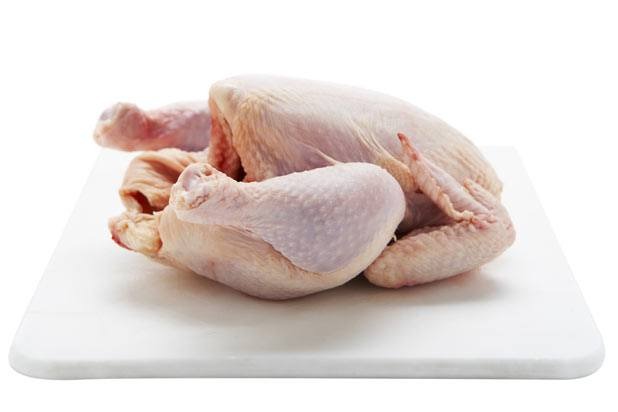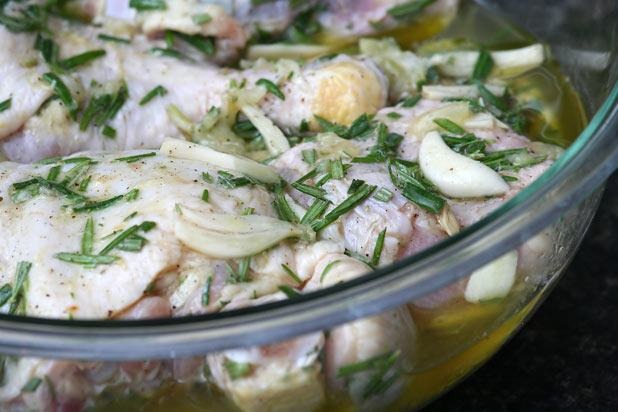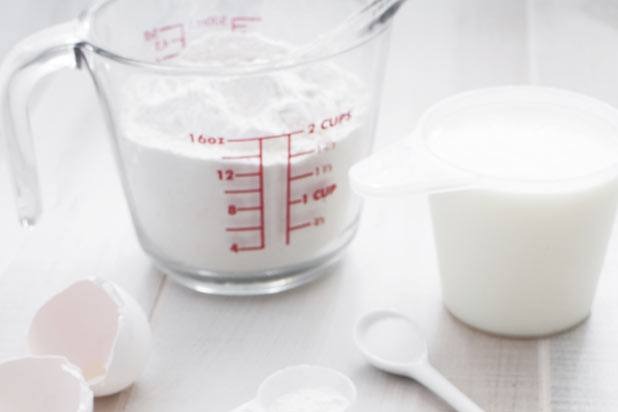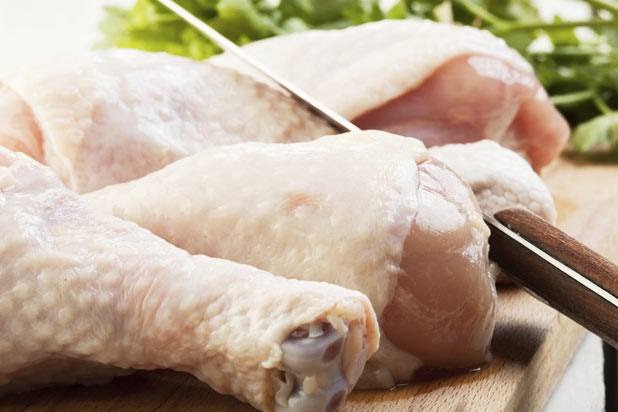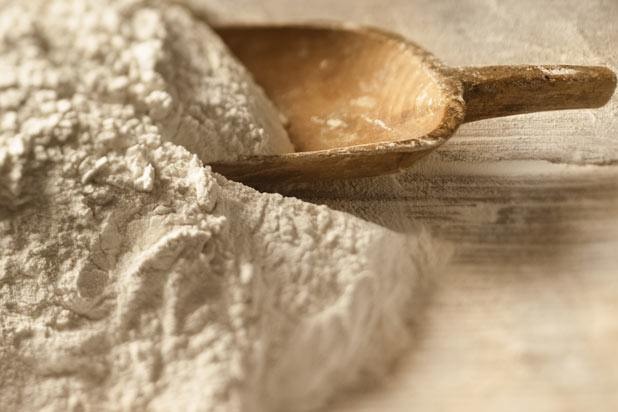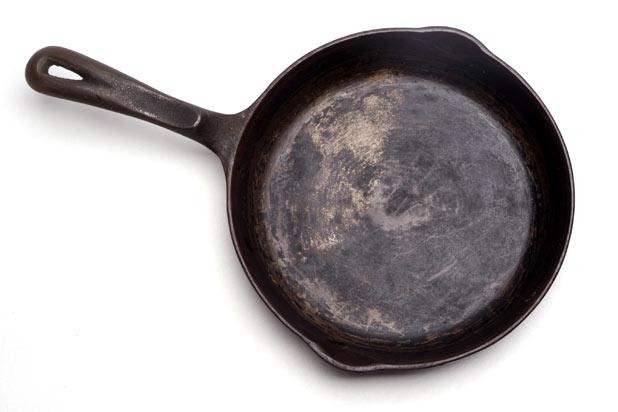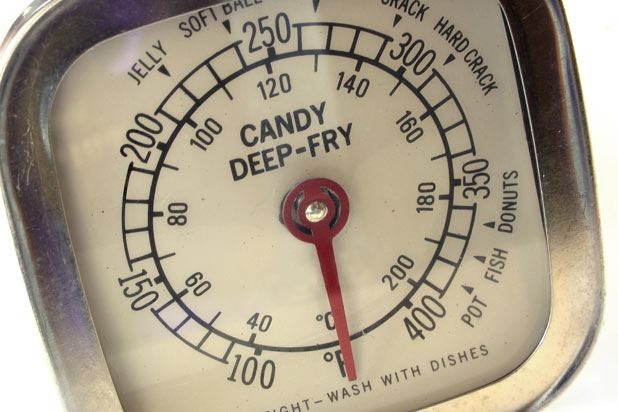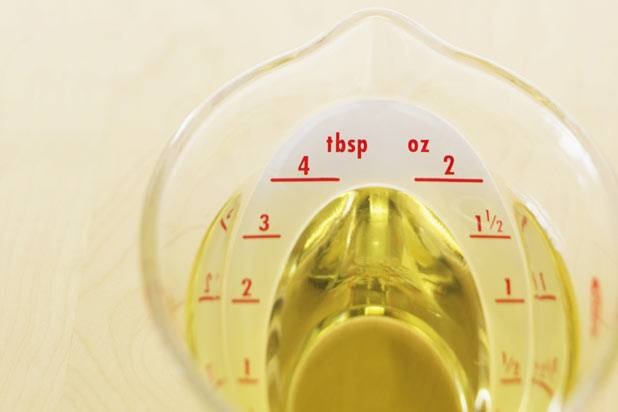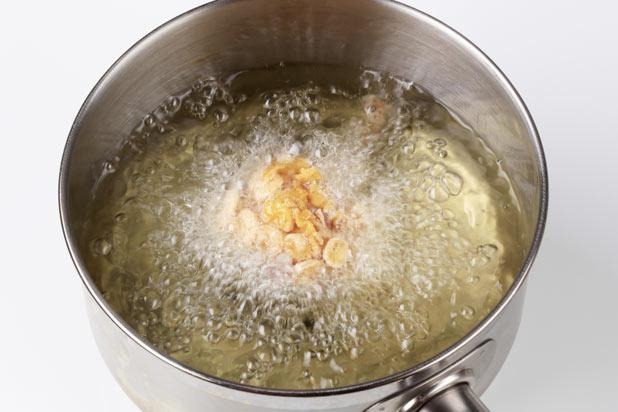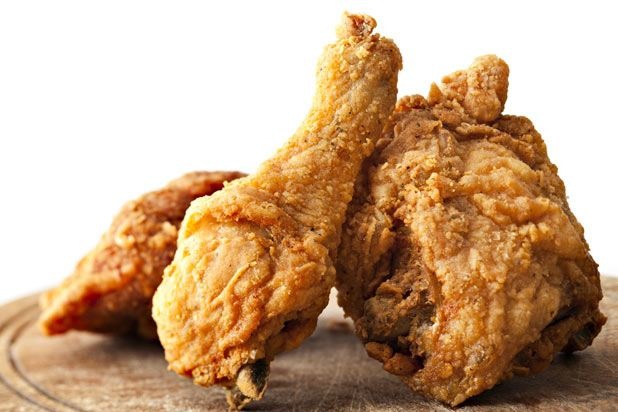How To Make The Perfect Fried Chicken Slideshow
If you want to make fried chicken the old-fashioned Southern way, buy a whole chicken and cut it into eight pieces. A 3.5-pound chicken is usually a sufficient size for making four servings of fried chicken, and you can even cut the breasts in half to create more pieces.
To Brine, or Not to Brine?
That's often the question when it comes to making fried chicken. Lots of people believe that because it'll eventually be fried and enjoyed in a perfect, crunchy crust, brining the chicken beforehand is irrelevant, but we disagree. Taking a cue from chef Justin Swain, we decided our chicken would be brined beforehand, in order to keep it from becoming overcooked and dry. Swain even suggested buying kosher chickens, which are already brined, if you don't have the time to do it yourself. Brining is easy, though, and it only takes a few minutes to put together — the rest is left to your refrigerator. And besides, what's wrong with a little extra flavor?
The Buttermilk
During our quest for the perfect fried chicken recipe, we saw varying marinades and batters that included everything from evaporated milk to plain old beaten eggs. People refer to this stage as "the batter" in the fried chicken recipe, and we liked chef Doug Psaltis' of Chicago's Bub City buttermilk batter the best. He thickens his with a little bit of flour and fine cornmeal, and adds seasonings like thyme, garlic powder, and cayenne. In addition to his recipe, we took a cue from another recipe and added a dash of hot sauce to our batter, as well. Some people just dredge their chicken in the batter quickly before turning to the flour, but we decided to let it marinate for at least 1 hour, so the acidic buttermilk could work into that chicken even more. Before you begin to marinate your chicken, make sure you pat it dry well so the brine has been wiped away.
Preparing Your Chicken
After the chicken has had some time to marinate, take it out of the fridge at least 30 minutes before you plan on frying it. The chicken should be at room temperature to ensure that it's cooked evenly. If you're using thighs, cutting along the edge of the bone with a knife increases the cooking area of that part of the leg, and further ensures it cooks evenly.
Seasonings
The beauty of fried chicken is that not only is it fried, but it's flavorful, too, and that all comes from the seasonings you add to the flour. Make sure to heavily season your flour; just follow our recipe to make sure you're precise. The seasonings are all up to your liking. If you want to add a little international flair to your fried chicken, try adding cumin like chef Doug Psaltis does. If you want to keep it classic, black pepper, salt, garlic powder, and cayenne usually do the trick, and Rebecca Lang likes using creole seasoning. Get a large, brown paper bag before coating the chicken in flour. Adding the pieces to the bag, rolling it up, and shaking it with all of your might is the best, and most fun, way to ensure your chicken is evenly coated.
A Cast-Iron Skillet
Believe it or not, but they didn't have deep-fryers in the South when they started making fried chicken, so just because you don't have one, either, doesn't mean you can't make fried chicken. The best way to make it is using a cast-iron skillet. Its heavy composition and greasy coating makes sure the oil temperature is regulated throughout and that the chicken doesn't burn. It's OK if you want to use a regular pan, but make sure to monitor your temperature carefully, and a nonstick variety is always best.
Temperatures
Speaking of monitoring the temperature, it really is an important part of making fried chicken. Why? If the oil is too hot, your chicken will burn. But if it's too cold, though, your chicken won't retain that crisp, crusty shell that we all love, and instead will soak up the oil and become a mushy, greasy mess. The best way to ensure your temperature is perfect-fried-chicken temperature is to use a thermometer. Candy thermometers are great because they can stand up to high heat and you can stick it right on the side of your pan so that it's in plain sight the whole time.
The Oil
The oil is another important aspect of fried chicken. Do not, for any reason, use olive oil, because it has a low burning point and you'll end up with black sediment before you've finished frying your first batch of chicken. That, and, olive oil has flavor, which is often a good thing but not when we're making fried chicken, because the flavor is all about the seasonings, remember? Peanut oil is the oil of choice in the South, but any vegetable oil with a high burning point will do.
Two-Step Frying
This trick is one we took from chef Swain's recipe, and we like to call it the two-step fry. Swain likes to par-fry his chicken at 300 degrees first, because the lower cooking temperature will assure your bird is cooked all the way through. This is also a great method for when you're trying to prepare ahead of time, because you can take the chicken out and let it rest after the first fry, and then when you're ready to serve it, finish it off at a piping 350 degrees for hot, golden fried chicken.
The Perfect Fried Chicken Recipe
Others may have differing opinions, but this is what we feel is the perfect fried chicken recipe. We took all of the necessary steps, from buying the right chicken and brining it to carefully creating a buttermilk marinade and seasoned flour. It's juicy, it's crispy, and it's delicious — it's perfect fried chicken.
